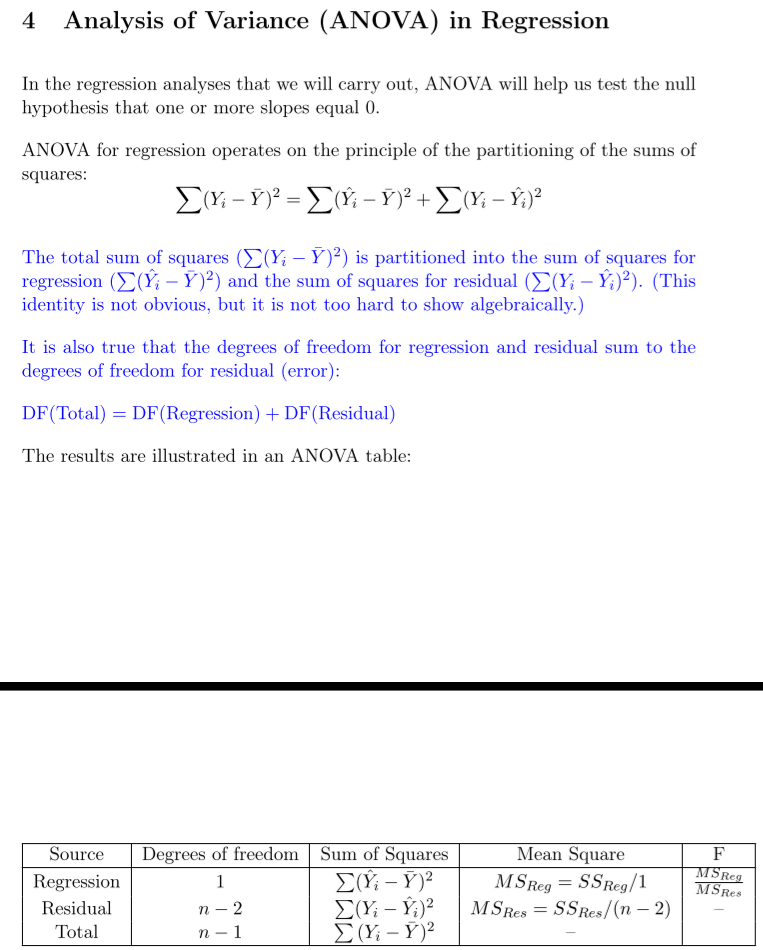Question
3 Filling in a simple linear regression ANOVA table Suppose we have a simple linear regression setting, where we have sampled 100 (X, Y) pairs
3 Filling in a simple linear regression ANOVA table
Suppose we have a simple linear regression setting, where we have sampled 100 (X, Y) pairs of values. When running a simple linear regression on this data, we find that 12% of the variance in Y can be explained by the linear relationship with X. If we completely ignore X, and calculate the sample variance of the Y values, we find that it's 50.0.
Complete the simple linear regression ANOVA table (the full table, as seen in class). Use R to find the p-value, and include that as well.
Filling in a one-way ANOVA table
To find the p-value for this question, you'll need to use R's pfcommand. pf yields values of the cumulative distribution function of the F distribution. For example,
pf(2.712,14,104)
yields 0.9980472, which is the area to the left of 2.712 under an F distribution with 14 and 104 degrees of freedom. (In other words, if X? F14,104, then P(X? 2.712) = 0.9980472.The p-value is not the area to the left, but we can use this area to find the p-value.

Step by Step Solution
There are 3 Steps involved in it
Step: 1

Get Instant Access to Expert-Tailored Solutions
See step-by-step solutions with expert insights and AI powered tools for academic success
Step: 2

Step: 3

Ace Your Homework with AI
Get the answers you need in no time with our AI-driven, step-by-step assistance
Get Started


